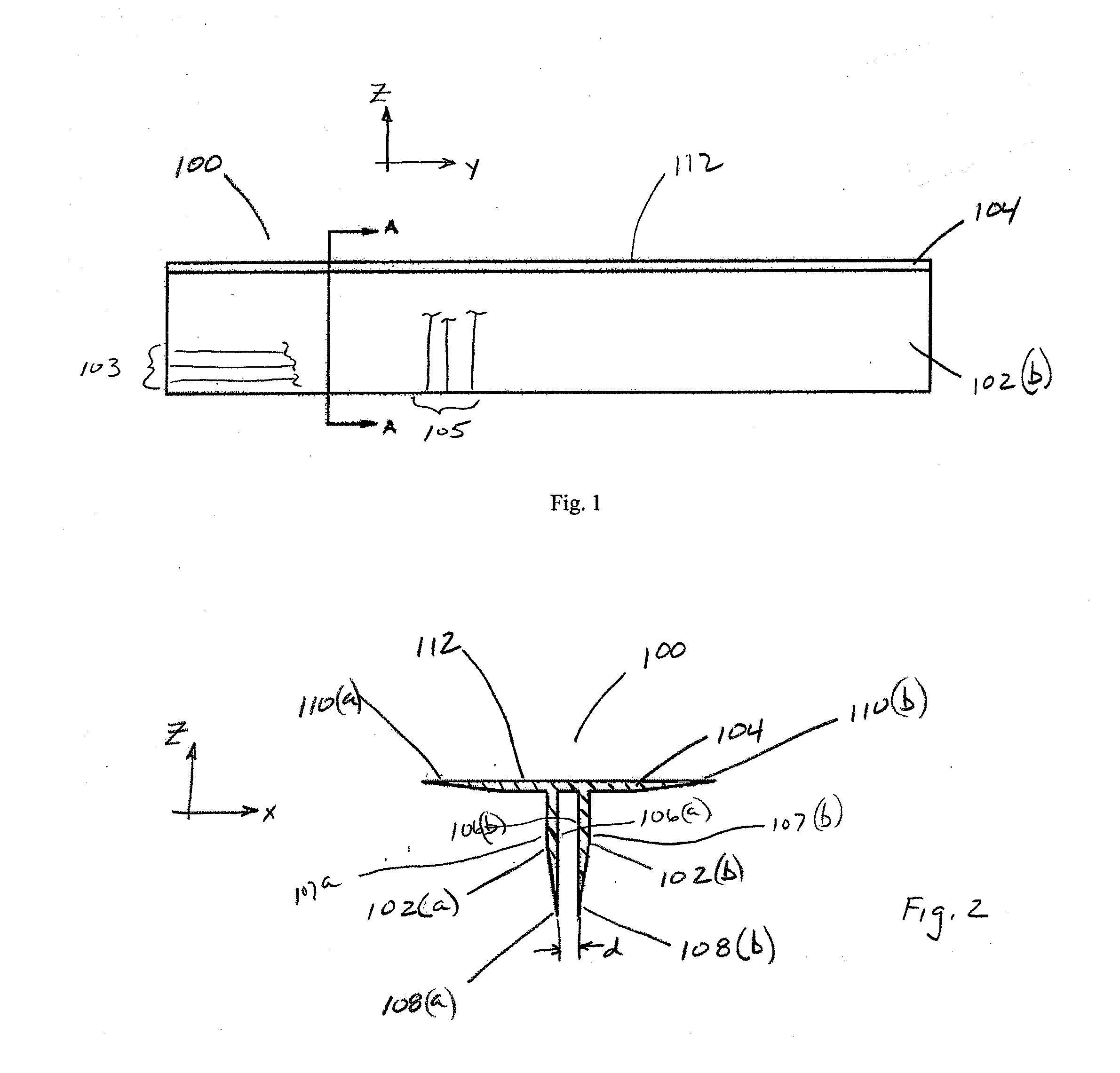Reinforcement for darted pi preforms
a technology of darted pi and preform, which is applied in the field of darted pi preform and darted pi preform reinforcement, can solve the problems of not having the same materials, not having comparable physical, chemical, thermal, etc., and limiting the ability of the preform to transfer and bear the stress applied to the finished component,
- Summary
- Abstract
- Description
- Claims
- Application Information
AI Technical Summary
Benefits of technology
Problems solved by technology
Method used
Image
Examples
Embodiment Construction
[0036]FIGS. 1 and 2 illustrate a 3D Pi preform 100, with integrally woven dependent legs 102(a) and 102(b) (collectively, “legs 102”). The preform is formed from a flat multilayer woven structure appropriately woven and folded to produce legs 102(a) and 102(b) extending from flange 104. It would be apparent to a person of ordinary skill in the art that other cross sectional shapes are possible from folded preforms. For instance, a T-shape can be formed from a flat woven preform if only one leg 102 is formed. Similarly a T-shape would also result from a Pi preform with no space d separating the legs 102, as if, for example, inside facing surfaces 106(a) and 106(b) were in an abutting arrangement.
[0037]For purposes of this disclosure, “fiber” is meant in a broad sense and encompasses fibers, yarns, or braids. While carbon fiber is preferred, the invention is applicable to practically any other fiber including but not limited to those that can be stretch broken, e.g. stretch broken car...
PUM
| Property | Measurement | Unit |
|---|---|---|
| inclined angle | aaaaa | aaaaa |
| inclined angle | aaaaa | aaaaa |
| width | aaaaa | aaaaa |
Abstract
Description
Claims
Application Information
 Login to View More
Login to View More - R&D
- Intellectual Property
- Life Sciences
- Materials
- Tech Scout
- Unparalleled Data Quality
- Higher Quality Content
- 60% Fewer Hallucinations
Browse by: Latest US Patents, China's latest patents, Technical Efficacy Thesaurus, Application Domain, Technology Topic, Popular Technical Reports.
© 2025 PatSnap. All rights reserved.Legal|Privacy policy|Modern Slavery Act Transparency Statement|Sitemap|About US| Contact US: help@patsnap.com



